-
 Bitcoin
Bitcoin $115100
-2.99% -
 Ethereum
Ethereum $3642
-1.38% -
 XRP
XRP $3.027
-5.51% -
 Tether USDt
Tether USDt $1.000
-0.05% -
 BNB
BNB $763.4
-1.32% -
 Solana
Solana $177.2
-5.42% -
 USDC
USDC $0.9999
-0.02% -
 Dogecoin
Dogecoin $0.2247
-6.47% -
 TRON
TRON $0.3135
0.23% -
 Cardano
Cardano $0.7824
-4.46% -
 Hyperliquid
Hyperliquid $42.53
-0.97% -
 Stellar
Stellar $0.4096
-6.09% -
 Sui
Sui $3.662
-2.61% -
 Chainlink
Chainlink $17.63
-3.57% -
 Bitcoin Cash
Bitcoin Cash $536.3
2.94% -
 Hedera
Hedera $0.2450
0.34% -
 Avalanche
Avalanche $23.23
-3.15% -
 Litecoin
Litecoin $112.2
-1.23% -
 UNUS SED LEO
UNUS SED LEO $8.976
-0.30% -
 Shiba Inu
Shiba Inu $0.00001341
-2.72% -
 Toncoin
Toncoin $3.101
-2.44% -
 Ethena USDe
Ethena USDe $1.001
-0.05% -
 Uniswap
Uniswap $10.08
-1.97% -
 Polkadot
Polkadot $3.938
-2.77% -
 Monero
Monero $323.9
0.87% -
 Dai
Dai $0.9999
-0.02% -
 Bitget Token
Bitget Token $4.481
-1.69% -
 Pepe
Pepe $0.00001199
-5.94% -
 Aave
Aave $288.2
-0.68% -
 Cronos
Cronos $0.1279
0.36%
What is the difference between NVIDIA and AMD graphics cards in mining performance?
NVIDIA and AMD GPUs offer varying cryptocurrency mining performance; algorithm, architecture, power consumption, driver support, price, and availability all influence which is superior for a given coin.
Mar 07, 2025 at 08:24 am
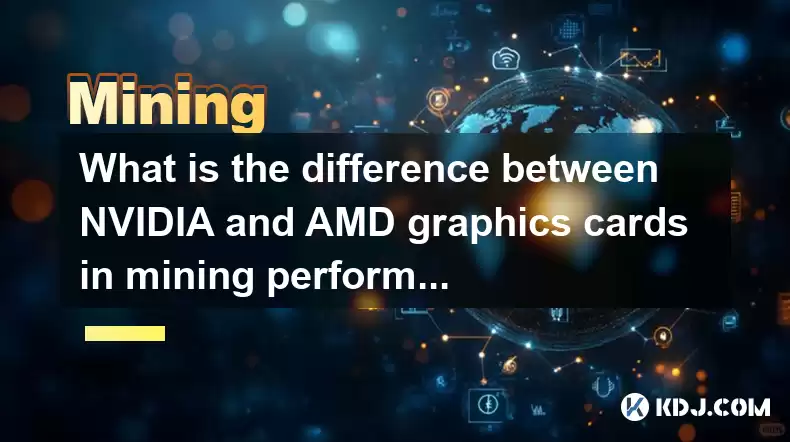
Key Points:
- Hashrate Differences: NVIDIA and AMD GPUs exhibit varying hashrates across different cryptocurrencies due to architectural differences and algorithm optimization. NVIDIA generally boasts higher hashrates for certain algorithms, while AMD might perform better on others.
- Power Consumption: Power efficiency significantly impacts profitability. Comparisons between NVIDIA and AMD cards often reveal differences in power draw for similar hashrates, impacting electricity costs.
- Driver Support and Software: Mining software and driver support play a crucial role. NVIDIA's CUDA platform enjoys wider adoption in mining software, potentially offering smoother operation and more optimization options compared to AMD's ROCm.
- Price and Availability: The cost of the GPU and its availability in the market are key factors influencing the return on investment (ROI). Price fluctuations and market demand can dramatically shift the profitability landscape.
- Algorithm Specificity: The choice between NVIDIA and AMD is highly dependent on the specific cryptocurrency being mined. Certain algorithms favor the architecture of one brand over the other.
What is the difference between NVIDIA and AMD graphics cards in mining performance?
The performance difference between NVIDIA and AMD graphics cards in cryptocurrency mining isn't a simple "one is better" scenario. It hinges on several factors, primarily the specific cryptocurrency's mining algorithm and the GPU architecture. Each generation of cards from both manufacturers introduces variations, further complicating direct comparisons. One generation of NVIDIA cards might outperform a contemporary AMD counterpart in Ethereum mining, while the reverse could be true for other algorithms like Equihash.
Hashrate, a critical metric, directly relates to the number of computations a GPU can perform per second. Higher hashrates generally translate to more mined cryptocurrency per unit of time. However, raw hashrate isn't the only determinant; power consumption is equally vital. A GPU with a slightly lower hashrate but significantly lower power draw can be more profitable due to reduced electricity costs.
NVIDIA GPUs, particularly those with CUDA cores, have historically enjoyed greater support within the mining community. Many popular mining software packages are optimized for CUDA, offering better performance and stability compared to AMD's ROCm platform. This software advantage often translates to a higher effective hashrate, even if the raw hashrate is slightly lower than a comparable AMD card.
However, AMD GPUs sometimes offer a better price-to-performance ratio. In certain market conditions, AMD cards might be significantly cheaper than comparable NVIDIA models, offsetting any hashrate or power consumption disadvantages. This makes them an attractive option for miners on a budget, especially when mining less demanding cryptocurrencies.
The choice between NVIDIA and AMD also depends on the specific algorithm used for mining. Some algorithms are inherently more efficient on NVIDIA architectures, while others favor AMD. For example, certain algorithms might leverage specific instruction sets present in one brand's GPUs but absent in the other, leading to significant performance disparities. This necessitates careful research before investing in mining hardware.
Beyond the technical specifications, the availability and pricing of both NVIDIA and AMD cards in the market significantly impact their suitability for mining. High demand and limited supply can inflate prices, making even the most powerful GPUs economically unviable for mining operations. Market fluctuations can dramatically shift the landscape of profitability, making a previously advantageous card suddenly less attractive.
Step-by-Step Guide to Comparing NVIDIA and AMD for Mining (Illustrative Example - Ethereum):
- Identify the Algorithm: Determine the mining algorithm used for the cryptocurrency (e.g., Ethash for Ethereum).
- Research GPU Models: Find comparable NVIDIA and AMD GPUs within a similar price range. Look at models from recent generations.
- Check Hashrate Benchmarks: Search for independent benchmarks comparing the hashrates of chosen models on the specific algorithm. Many websites and forums publish such data.
- Compare Power Consumption: Note the power draw (in Watts) for each GPU at peak performance. Lower power consumption is preferable.
- Assess Driver and Software Support: Ensure that the chosen GPUs have good driver and software support for mining the specific cryptocurrency. Look for compatibility with popular mining software.
- Calculate Profitability: Use a mining profitability calculator to estimate the potential earnings considering hashrate, power consumption, electricity costs, and the current cryptocurrency price.
Common Questions:
Q: Are NVIDIA GPUs always better for mining than AMD GPUs?
A: No. The best GPU depends on the specific cryptocurrency's algorithm, the price-to-performance ratio, power consumption, and the availability of drivers and mining software. While NVIDIA often holds an advantage in some areas, AMD can be more cost-effective in others.
Q: How important is driver support for mining GPU performance?
A: Driver support is crucial. Optimized drivers unlock the full potential of the GPU. Lack of proper drivers or compatibility issues can severely limit performance and even cause instability.
Q: Which GPU brand is better for mining Ethereum Classic?
A: The optimal choice depends on the current market conditions and the specific GPU models being compared. Generally, both NVIDIA and AMD offer suitable options, and the best choice will involve comparing hashrates, power consumption, and cost. Benchmarking specific models is crucial.
Q: Does the age of the GPU matter significantly in mining performance?
A: Yes, significantly. Newer generation GPUs typically offer improved architecture, higher hashrates, and better power efficiency. Older GPUs may struggle to compete with newer models in terms of profitability.
Q: How do I find reliable hashrate benchmarks for GPUs?
A: Several websites and forums dedicated to cryptocurrency mining publish independent benchmarks. However, always consider the testing methodology and ensure the benchmarks are relevant to the specific algorithm and mining software you intend to use. Be wary of biased or outdated information.
Disclaimer:info@kdj.com
The information provided is not trading advice. kdj.com does not assume any responsibility for any investments made based on the information provided in this article. Cryptocurrencies are highly volatile and it is highly recommended that you invest with caution after thorough research!
If you believe that the content used on this website infringes your copyright, please contact us immediately (info@kdj.com) and we will delete it promptly.
- Kiyosaki's Crypto Playbook: Ditching Paper for Real Assets Like Bitcoin
- 2025-07-25 22:30:11
- Satoshi-Era Whales Stir the Bitcoin Pot: What's the Deal?
- 2025-07-25 22:30:12
- Pi Coin Value in Indian Rupees (INR) 2024: Decoding the Hype
- 2025-07-25 21:45:50
- Crypto Investing: Top Picks and Meme Coin Mania in '25
- 2025-07-25 21:52:07
- Ark Invest's Portfolio Rebalance: Coinbase, Block, and the Crypto Shift
- 2025-07-25 21:52:07
- Bitcoin's Wild Ride: Sell-offs, Volatility, and What's Next
- 2025-07-25 21:55:18
Related knowledge
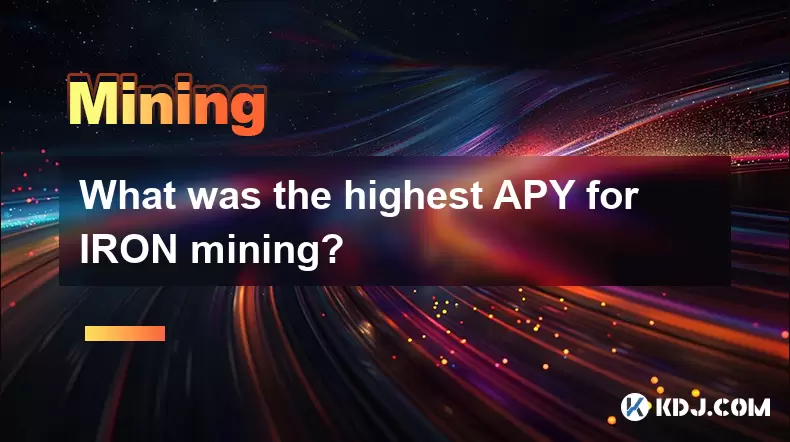
What was the highest APY for IRON mining?
Jul 23,2025 at 05:14am
Understanding IRON Token and Its Mining MechanismThe IRON token is a stablecoin that operates within the Iron Finance ecosystem, primarily on blockcha...

What is impermanent loss in IRON pools?
Jul 23,2025 at 09:00am
Understanding Impermanent Loss in the Context of IRON PoolsImpermanent loss is a phenomenon that affects liquidity providers in decentralized finance ...
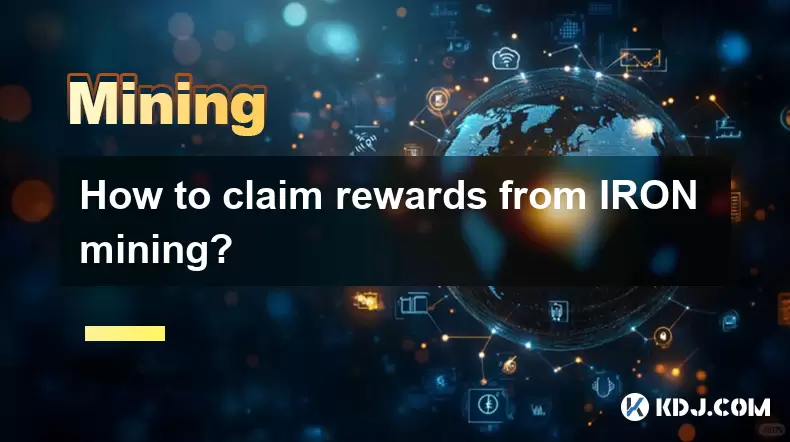
How to claim rewards from IRON mining?
Jul 23,2025 at 02:21pm
Understanding IRON Mining and Reward MechanismsIRON Finance operated as a decentralized finance (DeFi) protocol on the Polygon and Binance Smart Chain...
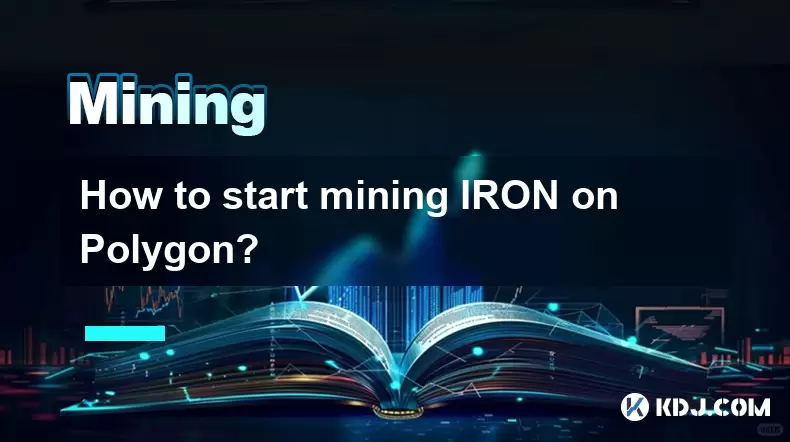
How to start mining IRON on Polygon?
Jul 23,2025 at 08:00pm
Understanding IRON and Its Role on PolygonIRON is a decentralized, algorithmic stablecoin designed to maintain a 1:1 peg with the US dollar. It operat...
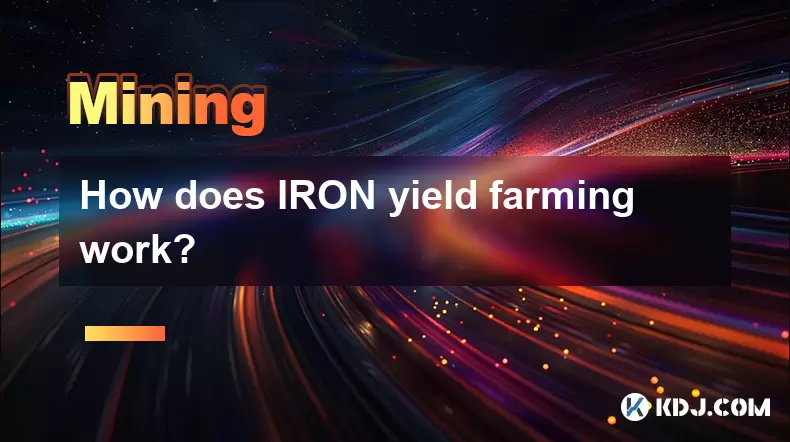
How does IRON yield farming work?
Jul 23,2025 at 10:14pm
Understanding IRON Yield Farming and Its Core MechanismIRON yield farming is a decentralized finance (DeFi) strategy that allows users to earn rewards...
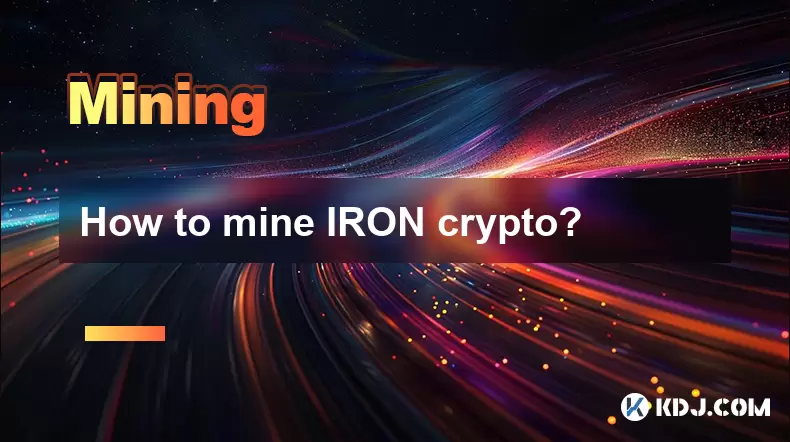
How to mine IRON crypto?
Jul 23,2025 at 07:08pm
Understanding IRON Crypto and Its Mining MechanismIRON crypto is not a standalone blockchain-based cryptocurrency that can be mined using traditional ...

What was the highest APY for IRON mining?
Jul 23,2025 at 05:14am
Understanding IRON Token and Its Mining MechanismThe IRON token is a stablecoin that operates within the Iron Finance ecosystem, primarily on blockcha...

What is impermanent loss in IRON pools?
Jul 23,2025 at 09:00am
Understanding Impermanent Loss in the Context of IRON PoolsImpermanent loss is a phenomenon that affects liquidity providers in decentralized finance ...

How to claim rewards from IRON mining?
Jul 23,2025 at 02:21pm
Understanding IRON Mining and Reward MechanismsIRON Finance operated as a decentralized finance (DeFi) protocol on the Polygon and Binance Smart Chain...

How to start mining IRON on Polygon?
Jul 23,2025 at 08:00pm
Understanding IRON and Its Role on PolygonIRON is a decentralized, algorithmic stablecoin designed to maintain a 1:1 peg with the US dollar. It operat...

How does IRON yield farming work?
Jul 23,2025 at 10:14pm
Understanding IRON Yield Farming and Its Core MechanismIRON yield farming is a decentralized finance (DeFi) strategy that allows users to earn rewards...

How to mine IRON crypto?
Jul 23,2025 at 07:08pm
Understanding IRON Crypto and Its Mining MechanismIRON crypto is not a standalone blockchain-based cryptocurrency that can be mined using traditional ...
See all articles

























































































